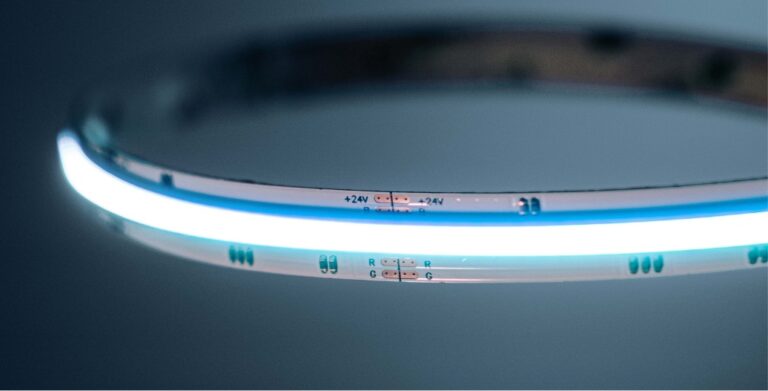
Scoliosis is a complex spinal condition that often requires surgical intervention to correct severe curvature and prevent progression. In recent years, customized spinal implants have emerged as a pivotal solution, offering improved alignment and better long-term outcomes. Dr. Larry Davidson, a leader in spinal surgery, recognizes that technological advances in imaging, design and materials are reshaping how scoliosis is treated, making surgeries more precise, patient-specific and biomechanically successful.
Traditional scoliosis surgeries relied on standardized rods and screws, which surgeons adapted during the procedure to fit each patient’s unique anatomy. While effective in many cases, this approach had limitations in terms of alignment precision, implant fit and long-term balance. Today, custom-designed implants built from a patient’s anatomical data allow for better preoperative planning and more consistent postoperative results.
Understanding Scoliosis and Its Surgical Challenges
Scoliosis involves an abnormal lateral curvature of the spine, often accompanied by rotation and varying degrees of deformity. It can be congenital, idiopathic or neuromuscular in origin and affects people of all ages. When the curvature progresses beyond a certain point, it can cause pain, limited mobility, organ compression and aesthetic concerns.
Surgical correction typically involves spinal fusion using rods, screws and bone grafts to realign and stabilize the spine. However, scoliosis is not a uniform condition; each curve pattern, spinal length and rotational angle is different. Customization becomes crucial for achieving optimal correction while minimizing surgical trauma and postoperative complications.
The Role of Technology in Custom Implant Design
The process of creating customized implants begins with advanced imaging. High-resolution CT and MRI scans provide a detailed 3D map of the patient’s spine, capturing the nuances of curvature, bone density and alignment. This data is fed into specialized software that allows surgeons and engineers to simulate different correction scenarios and design implants tailored to the patient’s anatomy.
These tools offer precise control over rod shape, screw placement and implant angulation. Surgeons can visualize how the spine can behave under correction forces, ensuring better outcomes even in severe or complex deformities. The result is a pre-contoured, patient-specific system that fits like a key in a lock, eliminating much of the intraoperative guesswork.
Benefits of Customized Implants in Scoliosis Surgery
Customized spinal implants bring multiple advantages to scoliosis correction procedures:
- Improved Alignment: Pre-contoured rods follow the patient’s spinal geometry, allowing for more accurate correction of curvature and rotation.
- Shorter Surgery Times: With implants already tailored to the patient, less intraoperative modification is required, reducing time under anesthesia.
- Lower Risk of Implant Failure: A better anatomical match reduces mechanical stress on screws and rods, lowering the likelihood of loosening or breakage.
- Enhanced Patient Outcomes: More precise alignment translates to improved posture, reduced pain and better long-term spine function.
- Minimized Complications: Customized hardware can reduce the risk of overcorrection, nerve compression and adjacent segment degeneration.
These benefits are particularly meaningful in pediatric or adolescent cases, where growth considerations must be considered during the planning phase.
Materials Used in Customized Scoliosis Implants
The materials used in customized spinal systems must be both strong and adaptable. Titanium alloys remain a top choice for rods and screws due to their high strength, biocompatibility and corrosion resistance. Titanium’s ability to integrate with bone and maintain structural integrity over time supports long-term stability.
PEEK and other high-performance polymers may be used in hybrid systems, especially when radiolucency is needed for postoperative imaging. For coatings, materials like hydroxyapatite or porous titanium enhance bone bonding and implant longevity.
In some cases, carbon fiber-reinforced composites are also being explored, offering improved fatigue resistance and clearer imaging compatibility for follow-up care.
Integration with Surgical Navigation and Robotics
Customized implants often work together with advanced surgical navigation systems and robotic-assisted platforms. These technologies guide implant placement with sub-millimeter accuracy based on the same 3D data used during implant design.
Surgeons receive real-time feedback on instrument trajectory, screw depth and rod positioning, further improving surgical accuracy and reducing the potential for human error. When coupled with personalized implants, this ecosystem of technology creates a powerful foundation for success.
This integration is especially beneficial for patients with complex deformities or revision cases. It improves confidence in surgical execution and minimizes the chance of complications.
Personalized Rods and 3D-Printed Solutions
One of the most exciting innovations in scoliosis treatment is the use of 3D-printed spinal implants. These devices are custom-built from patient imaging and offer features like variable stiffness, controlled porosity and even integrated bioactive surfaces.
Dr. Larry Davidson notes, “AI and 3D printing could result in the production of an implant that uniquely serves the needs of a specific patient. Such preparation would be done before a planned procedure based on the imaging studies of the patient’s spine.” This tailored approach allows surgeons to address the unique curvature and biomechanical demands of each scoliosis case with greater accuracy and effectiveness.
Clinical Evidence Supporting Customization
Clinical studies continue to demonstrate the benefits of customized spinal implants in scoliosis surgery. Outcomes show improved spinal alignment, reduced blood loss, shorter hospital stays and higher fusion rates when compared to conventional systems.
Patient-reported outcomes, such as pain relief, mobility and satisfaction, are also consistently better with customized approaches. These findings are particularly important in adolescent idiopathic scoliosis, where long-term quality of life and appearance are major concerns.
Surgeons have also reported higher levels of confidence in planning and executing complex corrections when working with patient-specific devices.
Educating Patients and Families
Because scoliosis often affects younger individuals, patient and family education is a vital part of the surgical journey. Understanding the value of customized implants helps set expectations, and fosters trust in the treatment process.
Visual tools, such as digital renderings, simulation videos and physical implant models, can help explain how personalization leads to safer, more effective surgery. Surgeons should also emphasize that custom implants are backed by data, not marketing hype, ensuring families make informed, evidence-based decisions.
A Tailored Approach to Spinal Alignment
The move toward customized implants marks a major advancement in scoliosis treatment. By aligning surgical hardware with the unique structure of each patient’s spine, surgeons can achieve better corrections, fewer complications and more predictable recoveries.
Personalization is no longer a luxury; it’s becoming a standard of care in complex spinal procedures. As imaging, design and manufacturing technologies continue to advance, customized implants can play a central role in shaping the future of scoliosis surgery, bringing patients straighter spines and stronger outcomes.







